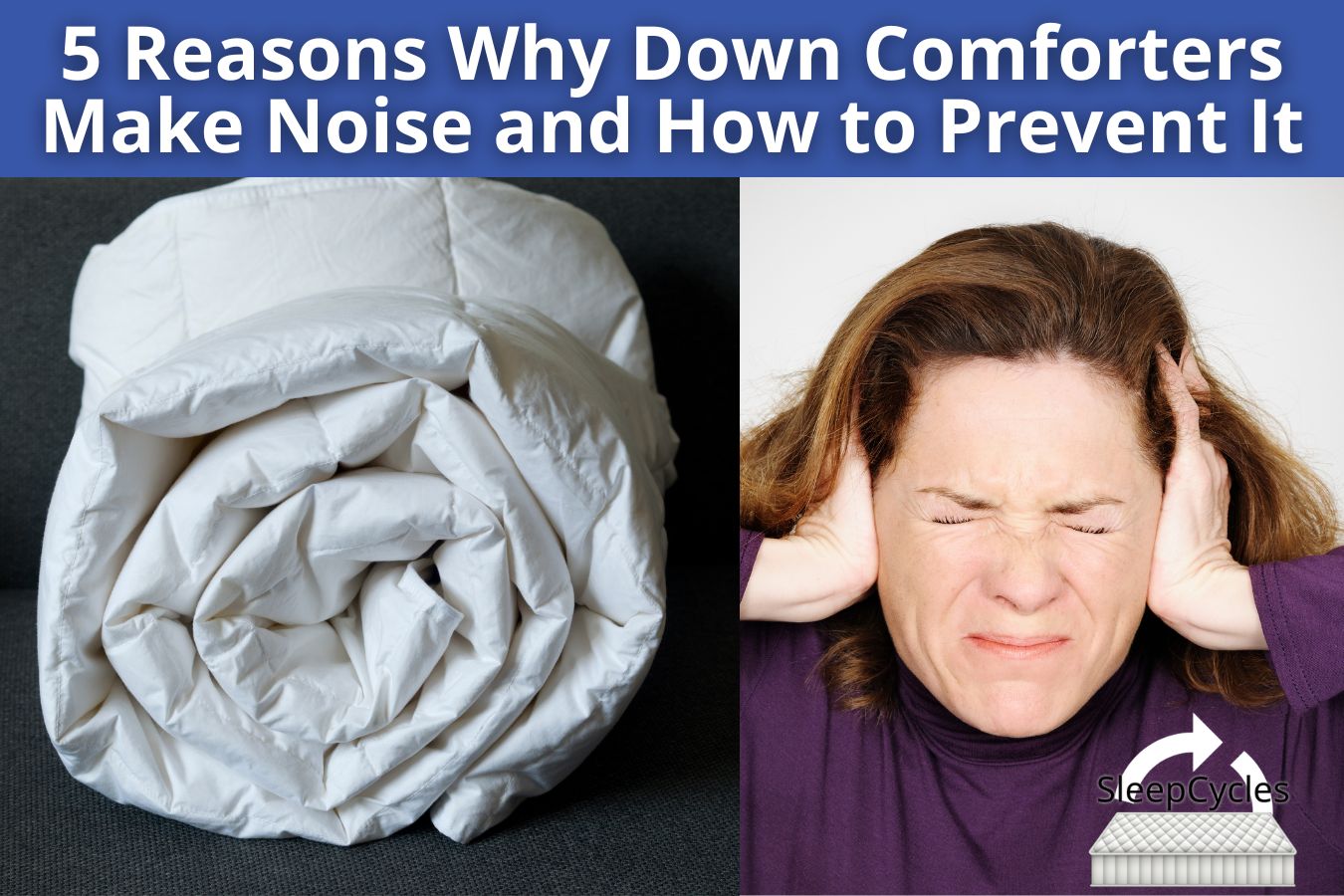So Can You Cover Your Comforter With a Duvet Cover?
The straightforward answer is yes. It is however not necessary to do so as comforters are designed to be ready-to-use beddings and can do pretty well with a top sheet, Read on to find out the best way to use a duvet cover over your comforter despite the slight difference between a comforter and a duvet.
What Is A Comforter And How Is It Different From a Duvet?
A comforter is oftentimes used interchangeably with a duvet but they’re not the same.
A comforter is a thick blanket often filled with synthetic fiber, quilted to ensure an even distribution of its fillings. It is not designed to be used with a cover and it is harder to clean when compared to a duvet. A duvet on the order hand is filled with feathers, wool, silk, or any other synthetic alternative. It is meant to be used with a duvet cover and It is fluffier than a comforter. Having its own covering, it is usually easier to clean.
Reasons To Cover a Comforter In a Duvet Cover.
You may want to cover your comforter for some of these reasons.
- Protection– If you live in a dusty environment or have children who can easily stain your comforter, you may want to prevent constant washing of your comforter by covering it up.
- Colour– In a scenario where the color of your delivered comforter does not match the one in your imagination, you can easily get a duvet cover of your choice and embed it in it.
- Style: There is no limit to creativity. If you have many duvet covers of different colors, you may want to switch duvet covers for your comforter periodically just to spice things up a little bit.
What Else Can You Cover a Comforter With Other Than a Duvet Cover?
Unlike duvets, comforters are best used without a cover but if you have to cover your comforter to prevent constant washing, the best option is to simply cover it with a top sheet. In fact, this is a better option for duvet covers. When you cover your comforter in a duvet cover, there is no need to use a top sheet and vice versa.
How To Cover Your Comforter In a Duvet Cover
Covering your comforter in a duvet cover is very easy. But first, ensure that your comforter is not larger than your duvet cover. If your comforter is larger than your duvet cover, your comforter will crumple within the duvet cover. This may cause structural damage to your comforter which will not look nice.
Carefully insert your comforter into your duvet cover then button up the open end to prevent your comforter from slipping out of your duvet cover and you’re done!
Benefits Of Covering Your Comforter In a Duvet Cover
- Increase durability – Covering your comforter in a duvet cover reduces the likelihood of your comforter getting stained which in turn reduce the need for constant washing thereby increasing the life span of your comforter.
- Decrease laundry time – Comforters are hard to wash. A comforter in a duvet cover is less likely to get dirty. If you are the type that washes your comforters every month, your wash will be a less stressful affair. In addition, a comforter covered in a duvet cover does not need to be washed often. Attention shifts to the duvet cover which are easier to wash.
- Decorative – Unlike uncovered comforters, you can always switch between duvet covers of different colors for decorative purposes.
Can You Put An Old Comforter In a Duvet Cover?
Yes. A duvet cover will do a good job of giving your old comforter a fresh look. It is also a creative way of increasing the time span of your old comforters especially when you are not ready to buy a new one.
Can You Use a Comforter As a Duvet Insert?
Although different, comforters share similarities to duvets in terms of function and structure which is why you can substitute a comforter for a duvet if necessary. However, if you need the extra fluffiness that a duvet provides, you should opt-in for a duvet especially if you can afford it.
Tips For Inserting a Comforter Into a Duvet Cover
- Ensure both the outside and inside of your duvet cover are clean
- Iron your duvet cover
- Ensure the size of your duvet cover matches the size of your comfort
- Prevent crumpling of your comforter within your duvet cover
- Button up the open end of your duvet cover to prevent your comforter from slipping out and getting dirty.
FAQs
A comforter does not need a cover but using a cover to protect it from dirt and stains is a good choice.
No. Your duvet cover should be slightly larger than your comforter in dimensions to accommodate your comforter and prevent crumpling
You can use a duvet cover to give your old comforter a new look, prevent constant staining, and reduce the number of times you need to wash it.
Covering your comforter in a duvet cover shifts your washing attention to your duvet cover. You should wash your duvet cover whenever they’re dirty or once every month.
As stated earlier
You can cover your comforter in a duvet cover. Whether for decoration, preventing dirt, or personal preference, don’t forget to make sure you prevent crumpling when inserting your comforter into your duvet cover. Additionally, covering your comforter will increase its durability and you’ll have to wash it less often.







